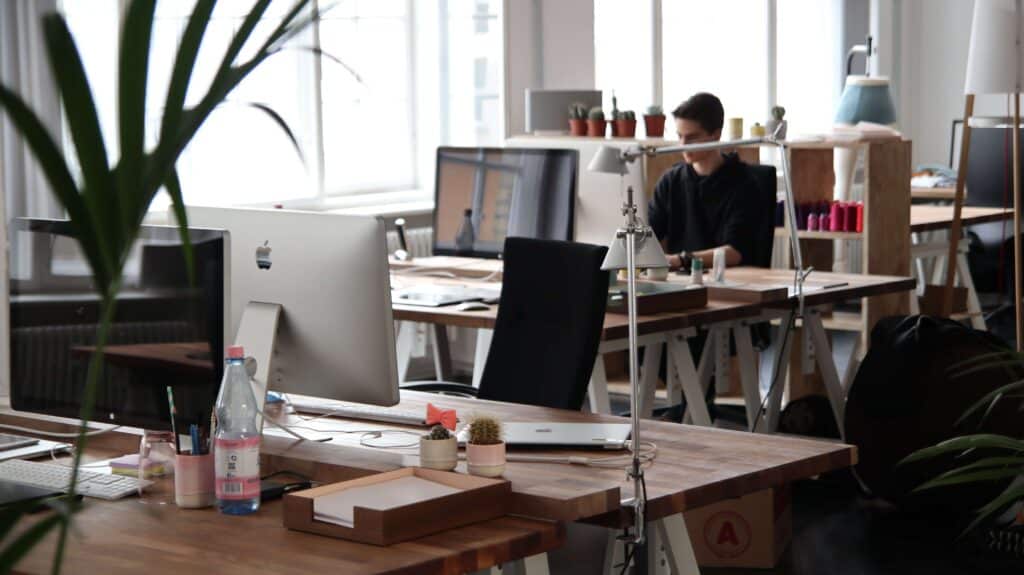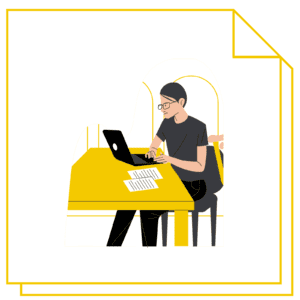
Why workplace is not merely just about the office
In the days when everything functioned according to well-known rules, and going to work usually meant coming to the office, only a few companies were considering whether their office space fulfilled all norms and user needs. For some organisations a moment for reflection was a discussion on renting new office space. Others – would even not draw attention to any workplace strategy, for years working according to standard models in well-known office conditions. The situation changed with the outbreak of pandemics when work became a host at our homes, whereas the empty office phenomenon caused the question about workplace strategy to become very current. What is workplace? How to create an office that supports everyday work? And why is Workplace Advisory your support if you want to take care of each aspect of the workplace?
The Polish language has not established a good counterpart of the English word workplace. That is why specialist terminology uses its original version. If translated literally workplace would mean a place of work and that is why for many people this is associated with office spatial layout, work safety rules, or ergonomics. Naturally, this is not wrong, however, the workplace is much more than that.
What is workplace?
There are many factors to include under the term workplace. These include:
⚬ how we work,
⚬ where we work,
⚬ what kind of organisational culture we create,
⚬ what kind of company we are and what kind we would like to be (internally and externally),
⚬ what we expect of our employees,
⚬ what kind of employees we seek,
⚬ how we communicate.

Workspace

Organisational culture

Employee experience

Internal processes

Company communication
Although the office is one element comprising the workplace, it is an everyday arena where all the other phenomena occur. Therefore, it should be created in such a way in order to facilitate, strengthen and integrate all the said activities. How should this be done?
The office always evokes some associations
We spend a significant part of our day and life at work. The environment in which we work is of great importance as it influences us continuously in a permanent way. You most probably have your favourite places to work, which give you a drive, inspire you, allow you to cut off and focus. It is good if such spaces are to be found in the office.
However, sometimes, the office, instead of bringing about positive associations, is uncomfortable, and makes effective work difficult bringing about the very unpleasant “Monday syndrome”. When planning and designing an office, one needs to take into account the comfort of diverse users. And one should not forget about spatial and workplace ergonomics, the current work model, the business strategy and organisational needs. A well-designed office will naturally become a useful tool for various stakeholders in the company.
Organisational culture thrives in the office

Regardless of the selected model or theory, it is wise to look at organisational culture through the prism of atmosphere, communication style, way of managing, employee attitudes, or mindsets. The office is the space where all the above-mentioned aspects take place. The more it is consistent with more profound culture levels (norms, values and principles) the more it will enhance these.
Is your office space consistent with organisational culture? Does it tell of a friendly atmosphere and openness? Or even contrary to that – it is chaotic, equipped with outdated solutions and completely does not fit the company’s vision of work? These are questions worth asking when contemplating one’s organisational culture.
The office is an all-year-long tangible benefit
Before the outbreak of pandemics, when one of the HR keywords was employee market, a lot of time was devoted to analysing offered benefits and adjusting these to the company so as to fulfil the requirements of the most demanding candidates. However, it was frequently forgotten that employee benefits are not the only nonwage ways of caring for the employee. A well-designed office can also be an effective benefit.
The very fact of whether our employee feels comfortable in the offered space is of great importance as everyday difficulties of being in contact with the company and workplace will influence his/her general experience. And this is greater than annual integrating awaydays.
Workspace can drive or stop internal processes
Internal processes are activities and processes that are key to the realisation of a company’s goals and strategy. This is about management processes, innovation, communication and transfer of knowledge as well as caring about development. Office space can support how they run by appropriate location of teams that co-operate with each other. The creation of diverse zones can practically help in the everyday functioning of both the company and the employee.
For example:
⚬ a company striving for innovative solutions and creative teams should not work in closed rooms, but decide to have space that will allow teams to work unconventionally;
⚬ an organisation that wants employees to integrate and to have better communication should, instead of cramped coffee points located in different parts of the office, decide to have a large kitchen in its centre. This is to encourage employees to spend more time together.
What story is your office telling?
Company communication is all types of information that a company sends externally through different channels: to partners, customers, potential candidates and other organisations. Office space also communicates, e.g. what kind of business partner or future employer we are encountering. Every single office tells a story about the owners and the employees and very frequently says much more about a company and its culture than a lengthy PowerPoint presentation.
It is worth ensuring that the office tells an authentic story and is consistent with how a company is positioning itself externally. This is only possible if we take into account the perspective and needs of different external recipients.

How to look after each aspect of the workplace
When thinking of good and effective functioning of a company, it is necessary to look into all the above aspects. The best way to follow is to create internal interdisciplinary project groups that see the entire concept by co-operating with each other. It is a frequent case that with a multitude of everyday chores a holistic view turns into thinking only about one’s area of responsibility, whereas the vision becomes blurred during implementation. In such circumstances, it is a good idea to reach out to Workplace Advisory, which will provide genuine support to you regardless of project size.
Workplace Advisory – genuine support when making difficult decisions
The goal of a Workplace Consultant’s work is to support and facilitate the optimum design of the workspace and to introduce such work environments that will provide for the best effectiveness, flexibility and clarity in a company (N. Oseland, 2013). A Workplace Consultant can support you at each phase of creating and managing the workplace:
at the very beginning, when research and the worked out appropriate workplace strategy constitute an inestimable source of knowledge, direction and inspiration, on the basis of which Architects can select the best spatial and product solutions. Such an approach towards the process of creating the office, which is based on research and strategy, allows to avoid unnecessary costs (supporting decisions on solutions that are really needed) and takes away the burden of substantial decision-making;
when implementing office change, changing rules or work model by means of activities pertaining to Workplace Change Management. A Workplace Consultant, owing to his/her experience, can suggest and help in implementing the change programme. Thereby, relieving the project group and working with the management or directly with the employees;
when the office is fully operational, i.e. helping with everyday challenges associated with the work environment (Workplace & Wellbeing Consulting), its functioning as well as to introduce small changes and support employees.
What you should know about Workplace Advisory

When should one take advantage of external consultants?
The answer would be: generally at each phase – the office creation project, and later its functioning, is a very dynamic and changeable process, just like the functioning of an organisation. Appropriate continuous management is of paramount importance, not only when preparing to move to the new office or renovating / rearranging it. Each phase has its own requirements.
What issues and problems are undertaken most frequently?
The change and implementation of a new model of work, the introduction of desk-sharing, moving to a new office, rearranging the office, the company’s development, working out the concept of the new office, the consolidation of a company or a number of companies within one office space, training employees regarding the model and place of work. We undertake activities that are connected with what is broadly understood as workplace change management.


What issues and problems are undertaken most frequently?
The change and implementation of a new model of work, the introduction of desk-sharing, moving to a new office, rearranging the office, the company’s development, working out the concept of the new office, the consolidation of a company or a number of companies within one office space, training employees regarding the model and place of work. We undertake activities that are connected with what is broadly understood as workplace change management.

What does a workplace consultant not do?
A workplace consultant is not an architect, a project manager, IT support, work and safety specialist, mentor or marketing person… although he or she frequently links and uses the knowledge from these fields within a selected scope.



